|
|
          |
|
One of the
most exciting and exotic regions to explore in
Pakistan is the
Province of Balochistan.
Covering an area of 347190 sq. kms. it forms the largest
province
of Pakistan.
It covers 44 percent of the land surface but has a
population of only 4.5 million (around 4% of Pakistan's); making it
the least populated province of the country. About half
of this population lives around
Quetta, the provincial Capital of
Balochistan.
|
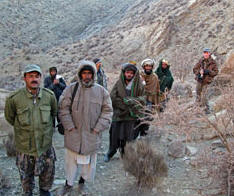 |
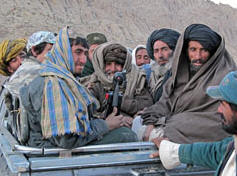 |
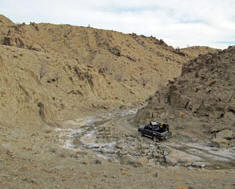 |
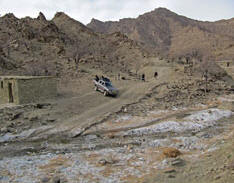 |
|
To it’s north and west, thousands of
kilometers of barren deserts and stark mountains form
the borders with Iran and Southern Afghanistan while due east, it
is divided from the rest of
Pakistan
by the Kirthar and Sulaiman / Suleman mountain ranges. Towards the
south, along the Arabian Sea, stretch 600 kilometers of
deserted sandy beaches of the Makran
Coast.
Most of Balochistan lies outside the Monsoon System of
weather therefore, the climate is extremely dry. The
annual rainfall is of about 15 centimeters, and even
less along the
Makran
Coast. |
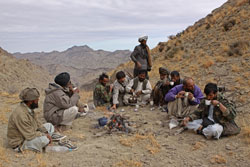 |
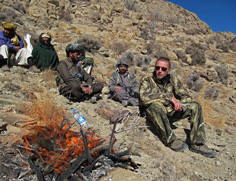 |
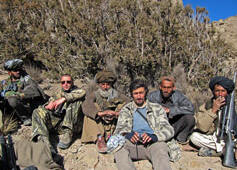 |
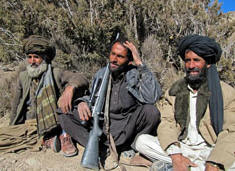 |
|
In terms of
physical geography, Balochistan has more in common with
Western Asia than with the Sub-Continent.
It’s wild & mysterious vistas of arid waste-lands, great
deserts, and formidable mountain ranges of amazing rock
formations (dramatically contoured and twisted by the
earth’s violent geological movements) make it an exotic
and dramatic area to visit. It’s dry climate combined
with the natural geographical features make it one of
the most daunting environments for successful human
habitation. Therefore, it is sparsely populated.
|
          |
|
Balochistan is populated by a
tribal society of Nomadic and semi-Nomadic tribes. The
most important are the Brahvis, Baluchis and Pathans who
speak Brahvi, Baluchi and Pushto respectively. The north
east of this Province receives rain and snowfall which
support juniper forests, cultivated land and orchards,
producing apples, almonds, apricots, peaches and grapes.
Most of the people in central Balochistan lead
semi-nomadic life herding sheep, goat and camels, while
others are subsistence farmers and laborers working in
Punjab and Sind during
winter months. Some areas of the South, near
the
Makran
Coast,
are famous for growing 300 different varieties of dates. |
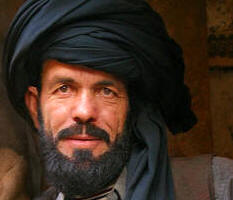 |
 |
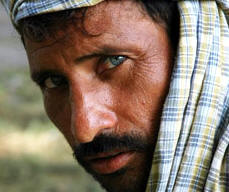 |
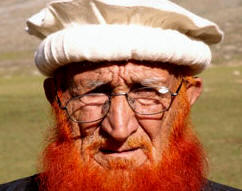 |
|
Archaeological
discoveries have confirmed that Balochistan has been
inhabited from the Stone Age of 50,000 years ago. The
important Neolithic excavation-site at “Mehargarh”
(7000-3000 B.C.) is the oldest in the world.
Archaeologists believe that as early as 6000 B.C.,
farmers in the
Bolan Valley
were cultivating barely and wheat, thereby becoming
probably the earliest humans to domesticate sheep and
buffalo. Recent archaeological discoveries in the Ketch
and
Rakshan
Valleys of Balochistan
have pushed the known history of this region even
further back; almost to 9000 B.C.
|
          |
|
Covering an area of 62,000 sq.
kilometers, Makran forms the southern most strip of
Balochistan, the largest but least populated
province
of Pakistan.
Its one of the 6 divisions of Balochistan province
having over 600 km. of coastline. It is hard to envisage
the vast wilderness of this remote area where miles and
miles of virgin golden beaches stretch along the sea in
bright sunshine and
blue skies during the
winter months. As there is hardly any rain here, the few
villages and settlements depend on spring water and
wells.
|
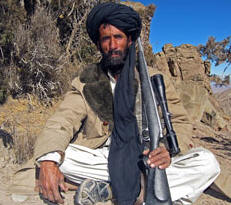 |
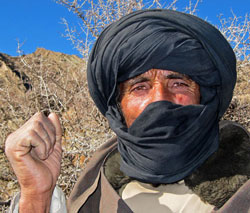 |
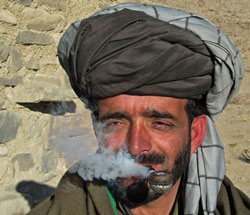 |
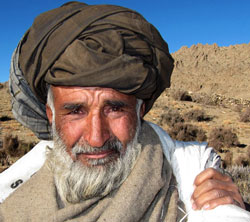 |
|
The coast has several tiny fishing
villages while main towns Gwadar, Ormara, Jiwani and
Pasni have small fishing harbors where the fisherman can
be seen coming in with their catch every morning and
evening. Gwadar, Pasni, Ormara, Jiwani, Turbat and
Panjgur all have airports connecting them with
Karachi and Quetta.
|
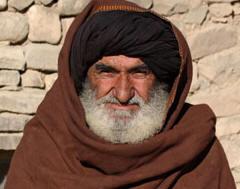 |
 |
 |
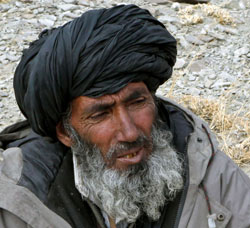 |
|
Quetta
(from kwatta,
meaning fort in Pushtu) was first mentioned in the 11th
century when it was captured by Muhammad Ghazni on one
of his invasions of the subcontinent. In 1543 the Moghul
emperor Humayun rested here on his retreat to Persia, leaving his one-year-old son
Akbar until he returned two years later. The Moghul
ruled Quetta until in 1556, when it was taken by the
Persians, only to be retaken by Akbar in 1595.
|
          |
|
The powerful
Khan of Kalat held the fort from 1730, In 1828 the first
westerner to visit Quetta described it as mud-walled fort
surrounded by 300 mud
houses.
Although occupied briefly by the British during the
First Afghan War in 1839,
|
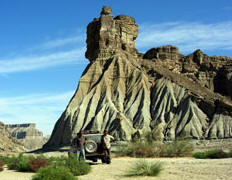 |
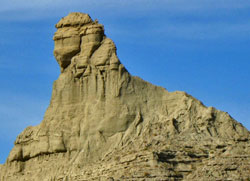 |
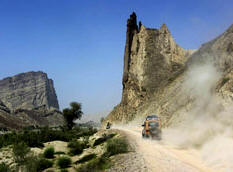 |
 |
|
it was not
until 1876 that Quetta
came under permanent British control and Robert Sandeman
was made political agent in Balochistan. Since Partition
the population of Quetta has increased dramatically. Because of
its military base and trading activities, and the
introduction of commercial fruit farming, Quetta
District can now support half a million people.
|
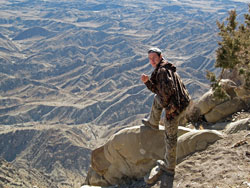 |
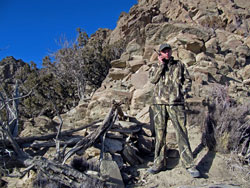 |
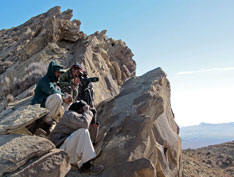 |
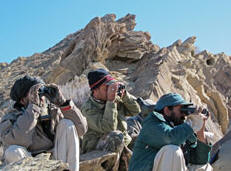 |
|
Quetta town
was almost completely destroyed in the great earthquake
of 1935, when 35,000 people were killed, trapped in
their ruined houses in the early hours of 31 May. In the
new town, single-storey buildings are set along
tree-lined roads that intersect at clearly labeled
roundabout, and there is a well-maintained
administrative centre and thriving university. |
          |
|
135km south to
Quetta,
Killa Saifullah is an
important district of Pushtun Districts of Balochistan.
Neighboring Districts Are Zhob, Loralai, Pishin. Its
border are linked With the neighboring Country
Afghanistan. Qilla
Saifullah or Killa Saifullah (Fort of Saifullah Khan) is a district in the
north west of Balochistan
province
of Pakistan
|
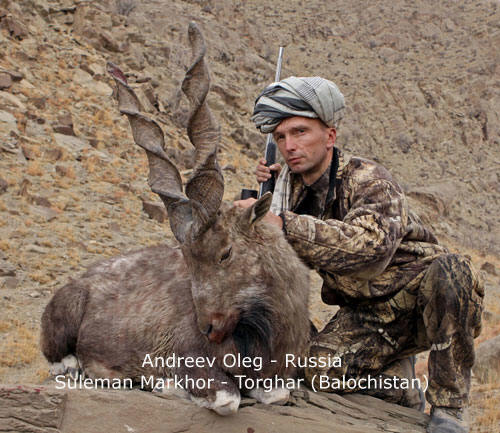 |
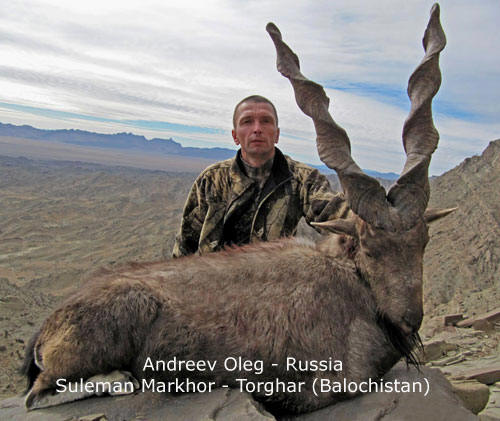 |
 |
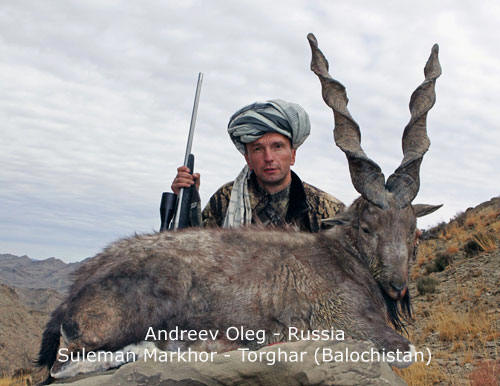 |
|
This District is named after
Saifullah Khan, who was from the Mirdadzai (Khodadzai)
tribe of Kakar Sunzerkhail. He was the great grandson of
Zarh Nikka, a renowned religious scholar and has built a
fort at Rabat
Karaiz, Town and Tehsil Qila
Saifullah, which was demolished by the British in an
assault. He grandson named Haji Abdul Haleem Akhunzada
and his descendents still lives on the place where
Saifullah used to operate against the English forces.
Saifullah Khan also went to Kalat Afghanistan to raise insurgency
against the British which he got succeeded.
|
          |
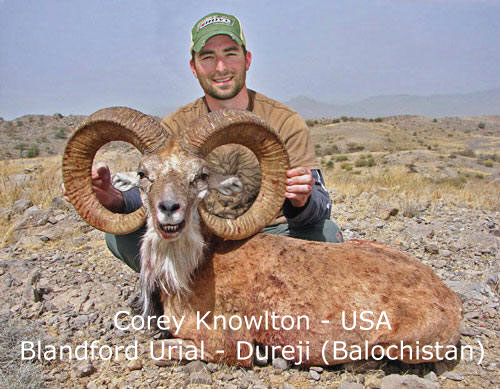 |
 |
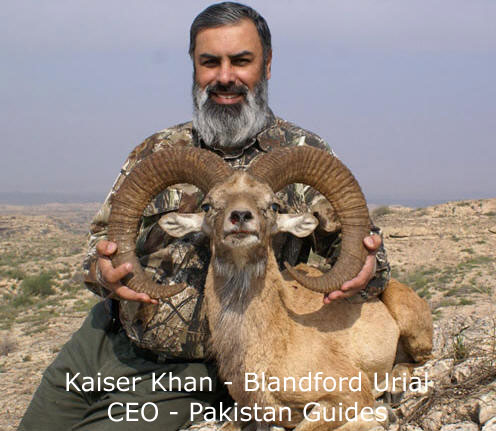 |
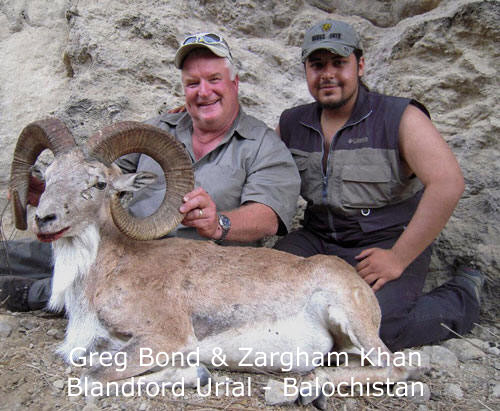 |
          |
|
Previously it was part of Zhob
District and known as Upper Zhob
sub-division. About two years ago Kashatoo sub-tehsil of
Zhob District was transferred to Qilla Saifullah
district with a new name, Badinai. After the inclusion
of Badinai sub-tehsil, Qilla Saifullah district, the district was re-organized
as far as administrative division is concerned.
Approximate population of Killa Saifullah is about
400,000 and this district is inhabited by Pushtoon casts
of
Main cast of Killa
Saifullah are the sub tribes of Kakar Sanzarkhail which
Include Jalalzai, its sub branches ( Musazai, Jogezai,
Kareemzai, Kamaludinzai, Shabozai) Meerzai, Musazai,
Khudiadadzai, Samalzai, Bharmzai, Alozai, Akhatarzai
etc. |
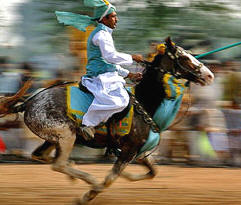 |
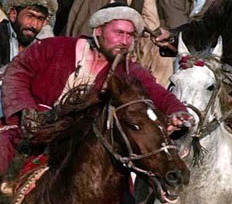 |
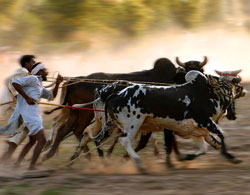 |
 |
          |
|
Set amongst with the rugged
mountains of the Toba
Kakar Range near the border of Afghanistan, the Torghar Hills are
an important wildlife area of Balochistan. To reach the
Toba
Kakar Range, a
wild and rugged land sparsely populated by semi-nomadic
tribes, one has to undergo a perilous jeep track. In
these mountains, life has remained unchanged over the
years. The agro-pastoral people still observe centuries
old tribal customs, living in tents made of black goat
hair as they move around the region on a seasonal basis
to look after their sheep and goats. Located in the
northernmost part of the Toba
Kakar
Range
in Qila Saifullah District is the Torghar valley.
|
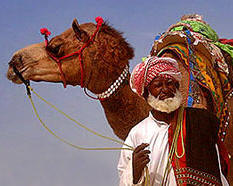 |
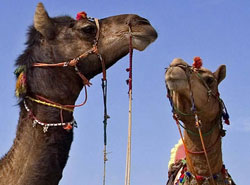 |
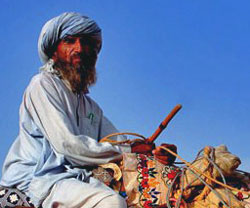 |
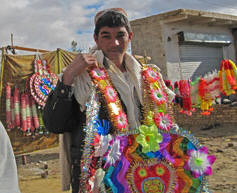 |
|
There are only four settlements in
Torghar, the largest being Tanishpa, where limited
cultivable land and perennial water from springs is
available. Here, people have small agricultural fields
and orchards for a subsistence economy. The local tribal
people are famous as much for their hospitality as they
are for their fierce pride. Torghar valley was the last
bastion of resistance to the British colonizers who
attempted to march towards Afghanistan in
the 19th century. The British could venture no further
than this valley. |
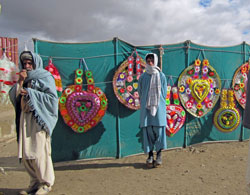 |
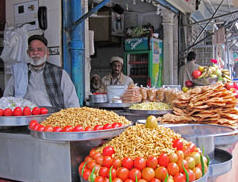 |
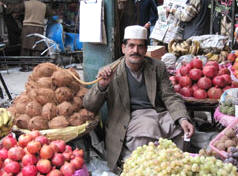 |
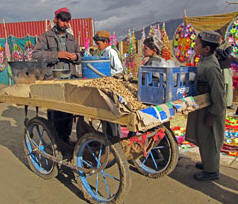 |
|
The landscape
here is rocky and barren and plants come to life when
there is rainfall. The sparse vegetation consists
largely of scrub grass and wild pistachio and juniper
trees. Near the streams, however, there is an abundance
of plants and small animals living among the large
boulders. The area is rich in herbs and shrubs that are
used as traditional medicine. |
          |
|
These remote
mountains are also home to an indigenous and endangered
species of wild goat called the
Suleiman Markhor
(Capra falconeri
jerdoni) and wild sheep called
Afghan Urial (Ovis
orientalis cycloceros).
These large ungulates, as well as leopards and Black
Bears, once used to enjoy the free range of the
mountains of northern Balochistan. Due to uncontrolled
hunting, large populations of these animals were either
wiped out or were on the verge of extinction by the
mid-1980s. Called the ‘Black
Mountain’,
Torghar consists of a series of dark colored upturned
ridges of sedimentary materials that are approximately
90 kilometers long, ranging from about 15 to 30
kilometers in width. |
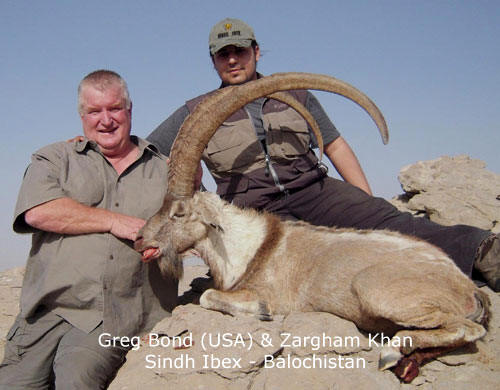 |
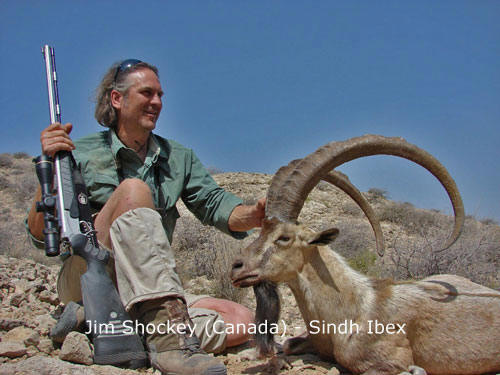 |
|
There were an
estimated 200 urial and less than 100 markhor into
existence in 1985. A survey carried out by Dr Kurt
Johnson on behalf of the US-FWS in 1994 estimated a
population of about 400 markhor. This showed a
substantial increase in the population in less than ten
years. The most recent survey sponsored by the USF&WS
and carried out by Michael Frisina in 1999 estimated the
Markhor
population to be about 1,684 and that of the
Urial to be about 1,742. Torghar is now home to the largest
population of these unique animals in the world. |
          |
|
The altitude of these mountains varies between 2,500 to
4,000 meters. Visitors armed with binoculars have to
climb up the mountain to the very top of the precipitous
ridges to view herds of Markhors feeding on grasses and
shrubs. Since they camouflage well with their rocky
surroundings, it is difficult to see them with the naked
eye. The Afghan Urial, which is reddish in color, is
sometimes easier to spot when it is silhouetted against
the blue sky on the plateaus above the cliffs, while the
Markhor prefer cliffs and ravines. |
 |
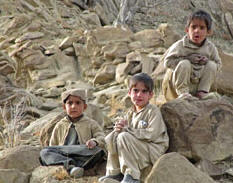 |
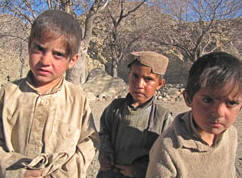 |
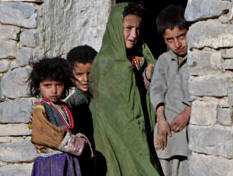 |
|
Wild tulips can often be spotted as can other
rare flowers and over 80 recorded species of birds
including Chakor and See-see partridge. These
mountainous tribal areas of Balochistan, near the border
with Afghanistan, are home to ethnic
Pakhtoon or Pushtun Tribes who have lived on this land
for centuries. The Government of
Pakistan
has marginal jurisdiction in this area where people live
by an ancient code of honor and tribal fealty. |
          |